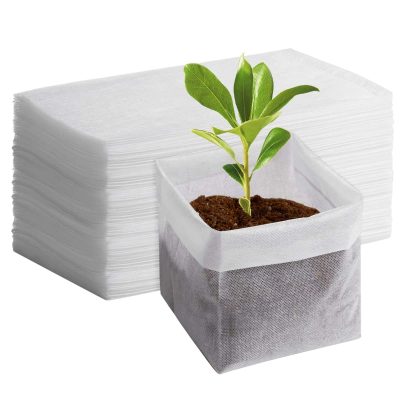To maximize plant growth with non-woven grow bags, you can follow these tips and techniques:
- Select the Right Bag Size: Choose a non-woven grow bag size that accommodates your plant’s root system. Ensure it provides enough space for the roots to grow and spread without becoming overcrowded.
- Use Quality Potting Mix: Fill the grow bag with a high-quality, well-draining potting mix. Avoid using garden soil, as it may be too dense and not provide adequate aeration and drainage for the roots.
- Ensure Proper Drainage: Place a layer of small rocks or gravel at the bottom of the grow bag to enhance drainage. This helps prevent waterlogging and ensures that excess water can drain out freely.
- Watering Practices: Regularly monitor the moisture level in the grow bag. Water the plants when the top inch of the soil feels dry to the touch. Avoid overwatering, as it can lead to root rot. The breathable nature of non-woven grow bags helps prevent waterlogging but may also result in faster water evaporation, so adjust watering frequency accordingly.
- Provide Nutrients: Non-woven grow bags don’t retain nutrients as well as traditional soil, so it’s important to provide regular fertilization. Use a balanced, water-soluble fertilizer or incorporate slow-release granules into the potting mix according to the specific needs of your plants.
- Monitor Temperature: Non-woven grow bags can experience temperature fluctuations more easily. Protect them from extreme heat or cold by placing them in suitable locations or providing shade and insulation when necessary.
- Pruning and Training: Regularly prune and train your plants to maintain their shape and encourage bushier growth. Remove any dead or damaged foliage to promote overall plant health.
- Support for Tall Plants: If you’re growing tall or vining plants, consider using stakes, trellises, or cages to provide support and prevent them from falling over or sprawling.
- Rotate and Replenish Soil: To avoid nutrient depletion and prevent disease buildup, rotate the grow bags’ location in subsequent growing seasons. Additionally, periodically replace the potting mix to ensure a fresh supply of nutrients.
- Pest and Disease Management: Keep an eye out for pests and diseases. Inspect your plants regularly and take appropriate measures, such as using organic pest control methods or applying suitable treatments, to manage any issues.
- Monitor Growth and Adjust: Observe how your plants are responding to the non-woven grow bags. If necessary, adjust watering, fertilization, or other care practices based on the specific requirements of your plants.
By following these tips and techniques, you can optimize plant growth and maximize the benefits of using non-woven grow bags in your gardening or horticultural endeavors.








